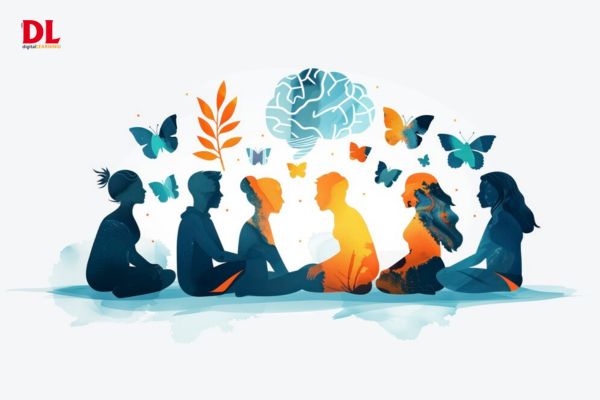
Schools are a second home for children—a space where they spend a significant part of their lives, learning, growing, and discovering their potential. Education, therefore, holds immense importance, but a school’s purpose goes far beyond academics. It is a foundation for shaping not only intellectual growth but also emotional and social development.
Behind every textbook, every lively class discussion, every lecture, and even the occasional scolding from a strict teacher lies an opportunity for learning that extends beyond the curriculum. These experiences play a vital role in shaping a child’s character and emotional resilience. However, one critical aspect often overlooked in education is the mental well-being of students.
Despite well-constructed curriculums and state-of-the-art infrastructure, the emotional health of children is frequently sidelined. It’s time to shine a light on this hidden gap in our educational priorities.
The Unseen Challenges Students Face
In today’s fast-paced, technology-driven world, students face a multitude of challenges. Beyond academic pressures, they navigate social expectations, peer comparisons, and the overwhelming influence of technology. Staying balanced amidst these demands is no easy feat.
Students are expected to excel academically while adapting to the rapid pace of technological advancements. The result? An increasing number of children grappling with stress, anxiety, and other mental health concerns. Research underscores the growing prevalence of mental health challenges among schoolaged children, highlighting the urgent need for schools to address this issue.
However, mental health is still a secondary consideration in many educational institutions. While subjects like math and science are taught with precision, essential life skills such as emotional intelligence, mindfulness, and stress management are rarely prioritized.
The Link Between Mental Health and Learning
A happy mind is a fertile ground for learning. Research suggests that students who are mentally and emotionally well-adjusted perform better academically. A stable mental state improves concentration, memory retention, problem-solving skills, and creativity. On the other hand, stress and anxiety can hinder cognitive function, making it difficult for students to retain information and express their ideas effectively.
But mental well-being is not just about academic success—it is about life success. Students who learn emotional resilience, stress management, and self-awareness early in life grow into adults who can handle challenges with confidence.
A Step Towards Change – Happy Mind, Happy Me
Recognizing the pressing need to address students’ mental health, G. Ram Books has come up with an innovative series—Happy Mind, Happy Me. This thoughtfully designed series, tailored for classes 1 through 10, aims to make mental well-being an integral part of the education system.
Happy Mind, Happy Me stands out for its engaging, interactive approach, ensuring students actively participate in their mental health journey. The series includes:
• Mindfulness Exercises: Practical techniques to help students stay focused and manage stress.
• Emotional Awareness Activities: Tools for recognizing and expressing emotions effectively.
• Self-Reflection Prompts: Questions that encourage students to explore and understand themselves.
• Real-Life Scenarios: Age-appropriate situations that teach children how to approach challenges constructively.
By incorporating these practices into their daily routines, students can build emotional resilience, develop stronger self-awareness, and approach life’s challenges with greater confidence.
Creating a Culture of Mental Well-being
The responsibility for fostering mental well-being doesn’t rest solely on schools; it’s a collaborative effort among educators, parents, and communities. Here’s how each can contribute:
1. Integrating Mental Health into Education – Schools should prioritize emotional intelligence alongside academics. Introducing structured wellbeing programs and allocating time for discussions on mental health can make a significant difference.
2. Encouraging Open Conversations – Teachers and parents must create safe spaces where students feel comfortable discussing their emotions without fear of judgment.
3. Modeling Healthy Behaviors – Children learn by example. When adults practice mindfulness and self-care, students are more likely to follow suit.
4. Reducing Academic and Social Pressure – While excellence is important, students should not feel overwhelmed by unrealistic expectations. A balanced approach to learning that values effort over perfection can reduce unnecessary stress.
5. Promoting Healthy Digital Habits – With the rise of social media, students are constantly exposed to comparisons and unrealistic standards. Encouraging a balanced relationship with technology can help protect their mental well-being.
Also Read: Reimagining Education in 2025: The Dawn of Immersive Learning
A Brighter Future Begins Now
Mental health is not a luxury—it is a necessity. If we want to nurture a generation of confident, emotionally intelligent, and successful individuals, we must start prioritizing their mental well-being today.
A child who grows up in an environment that supports their emotional health will grow into an adult who leads with compassion, creativity, and resilience. When we invest in our students’ mental health, we are not just shaping better individuals—we are shaping a better world.
It is time to reimagine education. A Happy Mind truly does create a Happy Me.
Views expressed by Shivani Sharma, Psychology writer, G. Ram Books Pvt. Ltd and Tency Mangal, Executive Director, G. Ram Books Pvt. Ltd.
























